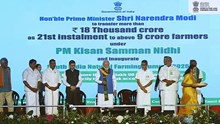
In the heartland of India’s Madhya Pradesh lies the Malwa region, home to one of India’s most dependable draught cattle breeds is the Malvi. Known by local names like Mahadeo Puri and Manthani, this breed has supported generations of farmers in farming, transport, and daily rural life. Malvi cattle are not just animals; they are an important part of Malwa’s heritage and a symbol of strength and reliability.
Where Are Malvi Cattle Found?
Malvi cattle are mainly found in the districts of Rajgarh, Shajapur, and Ujjain in Madhya Pradesh. They are also seen in parts of Ratlam and nearby areas. These cattle have adapted beautifully to the climatic conditions of the region, thriving in both open grasslands and semi-intensive systems where they graze during the day and rest in sheds at night.
Physical Characteristics That Stand Out
Malvi cattle are easy to recognize. They have a strong and sturdy build, with a whitish-grey coat. As they age, the cows and bullocks tend to become almost completely white, while males usually retain darker shades on their neck, shoulders, hump, and quarters. Their lyre-shaped horns are a distinctive feature, curved outward and upward, reaching about 20–25 cm in length.
The males stand tall at an average height of 134 cm, while females measure about 120 cm. A mature bull weighs around 500 kg, and a cow around 340 kg. Even at birth, Malvi calves are healthy, with an average weight of about 20 kg.
Hardworking and Reliable for Draught Work
Malvi cattle are best known for their working strength. Farmers in the region value them for their ability to pull carts and ploughs over long distances and rugged terrains. Their speed, stamina, and load-carrying capacity are remarkable. This makes them a preferred choice for transportation of goods in rural markets, especially in areas where tractors may not be affordable or practical.
Milk Production
While Malvi cattle are mainly reared for drought purposes, they also produce milk. On average, a Malvi cow can yield about 915 kg of milk per lactation, with the best ones producing over 1200 kg. The milk fat content is around 4.3%, which is quite decent for household consumption. The average age of first calving is around 49 months, and they usually calve once every 16–17 months.

Feeding and Management
Malvi cattle are usually managed under a semi-intensive system. During the day, farmers take them out for grazing in the nearby pastures, which are rich in natural grasses. In the evening, they are brought back to their sheds. Fodder crops like sorghum and maize are commonly grown for feeding. Bullocks are given concentrates for additional strength, especially when engaged in heavy work.
Easy to Maintain and Adaptable
One of the greatest strengths of Malvi cattle is their adaptability. They are well-suited to the hot, dry conditions of central India. Their resistance to common cattle diseases is good, and they can manage well even when the availability of feed is not ideal. Their ability to survive and work with minimal resources makes them an ideal breed for small and marginal farmers.
Why Malvi Cattle Deserve More Recognition
Despite their strengths, Malvi cattle are not yet included in a herd book or governed by any breed society. However, their genetic potential for work and moderate milk yield, coupled with their resilience and low maintenance, makes them a national asset worth preserving.
Efforts must be made to conserve this breed and promote its use through government schemes, farmer awareness programmes, and breeding support. The breed holds great potential not only in traditional farming systems but also in organic and low-input farming models.
Malvi cattle are a shining example of how indigenous breeds can support sustainable rural livelihoods. For farmers in Madhya Pradesh and neighbouring states, investing in Malvi cattle means investing in strength, tradition, and self-reliance. Their dual-purpose utility, natural resilience, and cultural relevance make them a perfect fit for Indian agriculture.
As we move toward more sustainable farming practices, the Malvi breed should be promoted and protected. They shouldn’t be seen only as a source of income and strength for the present but also as a legacy for future generations.
















